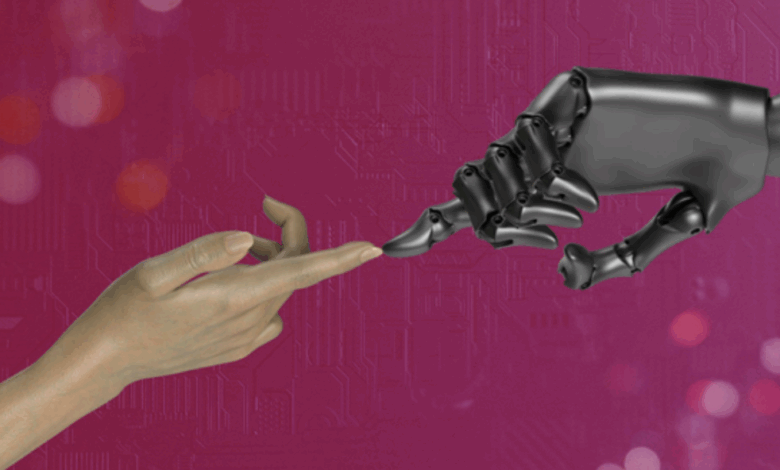
AI is not a distant future scenario; it is already integrated into our workplaces, reshaping jobs, teams, and industries. Yet, the reality of AI adoption often differs greatly from sensationalist headlines promising instant transformation. The real shift is not solely technological, but also deeply cultural and human. The central question leaders face today is not simply how to integrate AI, but how to meaningfully preserve human judgement, ethics, and creativity alongside it.
Today’s advanced AI solutions are not restricted by outdated or static datasets. They frequently incorporate real-time information, using techniques like multi-context protocols (MCP), retrieval-augmented generation (RAG), and live web integrations. However, AI’s core capability remains pattern recognition rather than genuine insight or nuanced comprehension. AI can identify patterns and predict outcomes effectively, but true understanding, empathy, and contextual judgement remain inherently human abilities.
Leading businesses like Amazon and Zara demonstrate how AI supports strategic decision making and operational efficiency. AI-driven forecasts help anticipate customer demand and optimise inventory management. While these advanced systems significantly enhance capabilities, human oversight remains crucial in interpreting, validating, and applying AI-generated insights effectively. Humans are essential in ensuring recommendations align with ethical standards, brand values, and customer expectations.
This shift towards deeper AI integration places new demands on workforce skills. Traditional educational approaches, which prioritise memorisation and routine tasks, no longer meet the requirements of modern workplaces. Today’s employees need training in ethical reasoning, critical thinking, empathetic judgement, and adaptive resilience. These abilities are crucial for successfully managing and collaborating with AI tools.
Countries like Finland and Singapore provide successful models for integrating AI literacy and ethical education into their curricula. Finnish schools introduce students early to AI concepts, including practical training in evaluating algorithm biases and ethical decision making. Similarly, Singapore’s SkillsFuture programme offers lifelong learning modules tailored to equip professionals with the skills needed for ongoing technological advancements. Such initiatives offer valuable blueprints for global education systems.
To effectively prepare future generations, schools should introduce mandatory AI literacy and ethics training beginning at secondary level. Curricula should cover understanding AI algorithms, recognising biases, assessing ethical implications, and critically interpreting AI-generated content. Businesses should engage actively with educational institutions, offering real-world insights, internships, and case studies to bridge theory and practical application.
Emerging workforce roles tailored specifically to AI-enhanced workplaces are increasingly important. Roles like AI ethicist, data auditor, and AI strategist will become commonplace. AI ethicists can help organisations navigate ethical considerations, data auditors ensure transparency and compliance, and AI strategists guide the integration and strategic use of AI technologies. Targeted training programmes should prepare employees for these roles, focusing on ethical frameworks, regulatory compliance, strategic thinking, and advanced data literacy.
Transitioning to a human-AI collaborative workplace requires careful planning and clear communication. Companies must clearly articulate how roles might evolve with AI integration, highlighting new opportunities and career pathways. Offering structured training programmes, mentorship schemes, and internal mobility opportunities helps employees transition effectively. Additionally, fostering a culture where questioning and refining AI-generated outputs are encouraged will enable organisations to leverage the full potential of AI technologies responsibly.
Organisations should also create “AI playgrounds,” environments where employees can experiment with AI safely and constructively. These settings encourage staff to develop nuanced skills, such as identifying biases, interpreting outputs contextually, and refining recommendations based on strategic objectives and ethical considerations.
Ignoring the human dimension of AI integration can lead organisations into strategic blind spots and ethical dilemmas. Effective AI adoption requires recognising the complementary strengths of humans and technology. AI magnifies human capabilities but requires human insight, judgement, and ethical oversight to deliver its full potential.
Ultimately, the promise of AI relies heavily on our ability to foster distinctly human traits: empathy, creativity, ethics, and critical judgement. Successful organisations of the future will understand that AI complements rather than replaces human workers.
Now is the time for proactive action. Organisations must assess workforce capabilities, identify skills gaps, and create comprehensive upskilling strategies. Educational institutions should embed AI literacy deeply into curricula, and governments should incentivise businesses to invest in human-centred training. Through collaborative efforts, we can ensure that AI integration leads not just to greater productivity but also to richer, more meaningful work experiences.





